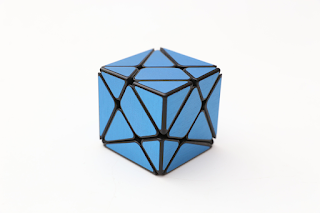Are you ready for a challenge? Puzzle cubes are a great way to put your problem-solving skills to the test and push yourself to the limit. In this blog post, we’ll explore some of the most challenging puzzle cubes out there, and provide tips and strategies for approaching them.
Section 1: Ghost Cube
The Ghost Cube is a unique puzzle cube that features irregularly-shaped pieces that don’t have any visible orientation. The lack of visual cues can make it difficult to know where to start, and the need for spatial reasoning skills means that this puzzle cube is not for the faint of heart. However, with some patience and perseverance, the Ghost Cube can be conquered.
To solve the Ghost Cube, it’s helpful to approach it layer by layer. Start with a single piece and build from there, using trial and error to figure out where each piece fits. Pay close attention to the angles of the pieces and try to visualize the cube in 3D. It can also be helpful to use algorithms to rotate pieces into position. With practice, the Ghost Cube can be a rewarding puzzle to solve.
Section 2: Gear Cube
The Gear Cube is a mechanical puzzle cube that features interlocking gears that must be aligned correctly to solve the puzzle. The unique turning mechanisms and complex gear system can make it a daunting challenge, but the tactile experience of manipulating the gears makes it a satisfying puzzle to work on.
To solve the Gear Cube, it’s important to pay close attention to the orientation of the gears. Each gear must be aligned correctly in order for the cube to function properly. It can be helpful to work on one face of the cube at a time, aligning the gears as you go. Use trial and error to figure out which turns will move the gears into position, and don’t be afraid to take the cube apart and put it back together again to get a better understanding of the mechanics.
Section 3: Mirror Cube
The Mirror Cube, also known as the Mirror Blocks Cube, is a variation of the Rubik’s Cube that features a reflective surface on each piece. The mirror surface can make it difficult to differentiate between pieces based on color alone, and the need to recognize patterns and shapes can add an extra layer of difficulty.
To solve the Mirror Cube, it’s important to pay attention to the shapes and patterns that are formed as the cube is turned. Try to group pieces together based on shape, rather than color. It can be helpful to work on one face of the cube at a time, using algorithms to move pieces into position. Don’t be afraid to experiment with different turns and twists to see what works.
Section 4: Axis Cube
The Axis Cube is a twisty puzzle cube that features a central axis that runs through the middle of the cube. The axis can rotate independently of the rest of the cube, which adds an extra layer of complexity to the puzzle. The need to keep track of the orientation of the axis and the position of each piece can make the Axis Cube a challenging puzzle to solve.
To solve the Axis Cube, it’s important to pay attention to the orientation of the axis and the position of each piece as the cube is turned. Try to visualize the cube in 3D and use algorithms to move pieces into position. It can be helpful to work on one layer of the cube at a time, rotating the axis as needed to move pieces into position. Don’t be afraid to take the cube apart and put it back together again to get a better understanding of how it works.
Conclusion
Puzzle cubes can be a fun and challenging way to push yourself to the limit and improve your problem-solving skills. The Ghost Cube, Gear Cube, Mirror Cube, and Axis Cube are just a few examples of the many challenging puzzle cubes out there. With patience, practice, and determination, anyone can master these mind-bending puzzles.
Whether you’re a seasoned puzzle cube solver or just starting out, these cubes are sure to provide a satisfying challenge. From the complex twists and turns of the Ghost Cube to the unique axis rotation of the Axis Cube, each puzzle cube presents a unique set of obstacles to overcome. By trying out these different cubes and mastering their solutions, you can improve your spatial awareness, hand-eye coordination, and critical thinking skills.
So, if you’re up for the challenge, give one of these puzzle cubes a try. Who knows, you may even discover a new favorite cube to add to your collection.

